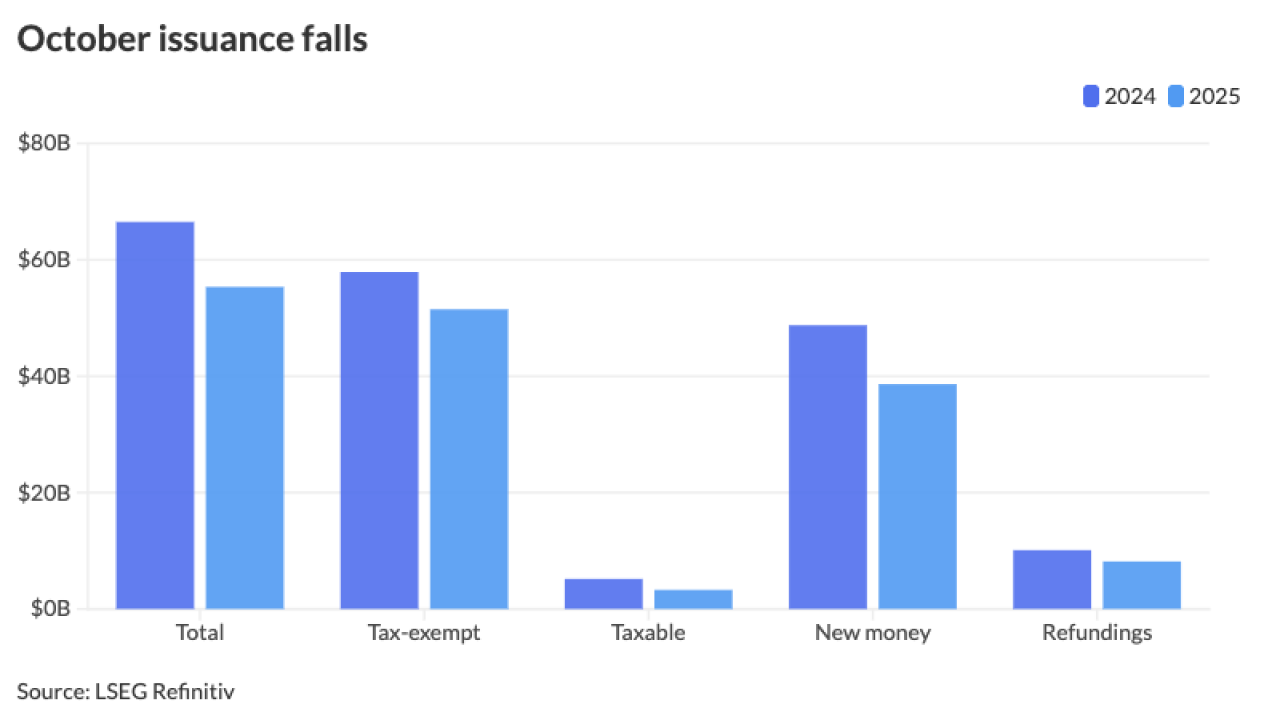
Moody's Ratings upgraded Minneapolis to Aaa from Aa1, bringing the city the triple-A triple crown.
The outlook is stable, reflecting an expectation that the city's strong financial profile will help it absorb cost pressures from employee compensation and public safety staffing, and that the healthy regional economy with solid employment growth, new development and rising incomes will continue to support sound economic metrics.
"It is probably accurate to say that we were very methodical and we're being rewarded for sound planning," CFO Dushani Dye told The Bond Buyer.
"It's kind of a big deal that
Allen Hoppe, director of banking, investments and debt, said that according to their team's research, roughly 1 in 1,000 cities — out of about 20,000 rated U.S. municipalities — have across-the-board triple-A ratings.
In
Dye said the 2025 budget debate had been "an unusual year" for Minneapolis, with the mayor proposing an 8.1% property tax levy increase, the Board of Estimate and Taxation revising it to 8.3%, and then the City Council bringing it back down by roughly one and a half percentage points.
The final 2025 budget
"That doesn't mean that we won't increase the property tax next year," Dye said. "We do have the ability to increase it."
In its report, Moody's noted both of Minneapolis' top revenue sources, state aid and property taxes, "are increasing materially, providing the capacity to absorb cost growth while maintaining ample reserves."
The city's long-term liabilities ratio has declined to levels that align with medians and Aaa-rated peers, and revenue growth is keeping up with expenditure growth, with the city's available fund balance ratio staying between 45% and 50% the past few years.
Moody's warned a weakening of demographic trends or labor force participation, a materially weakened financial profile with a worsening fund balance ratio, or an increase in the long-term liabilities ratio to well above 250% could lead to a downgrade. But the city's financial management team said it is keeping an eye on those and other concerns.
"Our debt burden is very manageable," said Hoppe, adding that the city has "pretty routine" debt plans. Minneapolis has come to market once a year in recent years, "and that's been sufficient," he said. The city plans to return to market nine or 10 months from now, with a bond issuance of similar size and structure
Moody's noted that Minneapolis' debt service schedule is rapidly descending, with the fast amortization of debt a strength that's reflected in the city's very low adjusted fixed cost ratio.
"Future debt will likely be wrapped around the current schedule keeping actual annual debt service relatively level, but the descending schedule is a credit positive because it provides the city flexibility in structuring future bond issuances without having material budget impact," Moody's said.
The city has relatively low exposure to variable rate risk — from its Series 2011B GOULT variable rate bonds, Moody's said — and no derivative agreements.
Minneapolis also emerged from the pandemic in a stronger position than some other cities in the Midwest.
"We've really maintained a strong fund balance," said Hoppe. "Some entities really leaned on the ARPA, and then they're going to have more hurt in their fund balance."
Dye noted the city got $271 million in American Rescue Plan Act funds, which will be spent by the end of this year. Dye and her team used some of the funds for revenue replacement, and any programs funded by ARPA "were all three-year-long programs, and they were all meant to kick-start the local economy," she said.
"The city did a good job of not setting itself up with unfunded liabilities in the future — you know, like start something with ARPA and then, well, what do you do when the money runs out?" said Controller George Hardgrove. "There was a lot of planning that went into that, as well, to make sure that if we are hiring people, to put them on a different funding source."
The key to the city's success on the long-term liabilities front, Hoppe said, is "just moderation … The operations of course are funded. We're not using any debt for operational purposes, it all goes to capital. The capital growth has been moderate; there's some good planning going on, with citizen engagement, for what gets done.
"Every big community goes through some cycles, it's not always even," he added. "But we've been on a trend where there's been a good balance, and there just hasn't been the need [for additional debt]."





